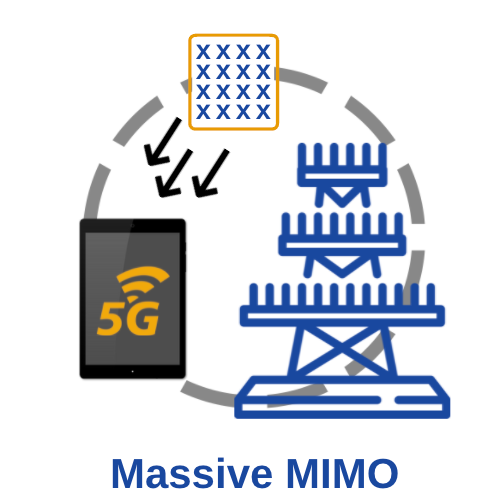
The term mMIMO (Massive Multiple Input/Multiple Output) is not new, but its use has surged with the advent of 5G technology. mMIMO is an advanced form of MIMO that involves a large number of antennas, often numbering in the dozens or even exceeding 100, at the base transceiver station (BTS). Essentially, mMIMO aims to amplify the benefits of conventional MIMO on a much larger scale. It is a critical component in achieving the high performance targets set for 5G networks.
Benefits of mMIMO
mMIMO brings several significant advantages.
- Improved Coverage: The use of numerous antenna elements enables efficient beamforming, which can significantly enhance coverage. This technique, sometimes called 3D beamforming, manages beams both horizontally and vertically, allowing precise adjustments to suit user locations, even in areas with weak signal coverage. This results in high data rates for users regardless of their location.
- Higher Capacity: mMIMO supports Multi-User MIMO (MU-MIMO), allowing it to serve a large number of users simultaneously. This capability greatly enhances the overall user experience by providing higher data throughput and reducing congestion.
Deployment and Market Trends
The increasing coverage of 5G and the growing number of connected devices are driving the expansion of mMIMO deployments. According to ABI Research, global mMIMO deployments are expected to reach 32 million by 2026.
Fei Liu, a 5G & Mobile Network Infrastructure Industry Analyst at ABI Research, explains that there are two primary mMIMO configurations in use:
- 64T64R (64 Transmit, 64 Receive): This configuration is primarily used in very dense urban areas due to its superior capacity and coverage. However, it is more energy-intensive and costly, which can impact the operators’ Return on Investment (ROI). Additionally, its size and weight present logistical challenges.
- 32T32R (32 Transmit, 32 Receive): This setup provides sufficient capacity for urban and suburban areas. It is less expensive and consumes less energy compared to 64T64R.
Operators often deploy a mix of 64T64R and 32T32R based on specific scenario requirements. Innovations in hardware and software are expected to reduce the energy consumption, cost, weight, and size of 64T64R configurations, making them more feasible for widespread use in the future.
Regional Deployment Variations
There are notable regional differences in mMIMO deployments:
- United States: Actively deploying 64T64R to cater to densely populated urban areas.
- Japan, South Korea, and Europe: Favoring 32T32R configurations for their urban and suburban needs.
- China: Initially adopted 64T64R, but has shifted towards 32T32R post-2021. Despite this, 64T64R is anticipated to become more prevalent in the next few years.
The Asia-Pacific region is expected to lead the 5G mMIMO market due to the significant adoption of 5G technology in China, Japan, and South Korea.
In conclusion, mMIMO is a pivotal technology in the 5G era, offering enhanced coverage and capacity. Its deployment strategies vary by region, but ongoing advancements are poised to make high-capacity configurations more practical and widespread, shaping the future of mobile communications.


